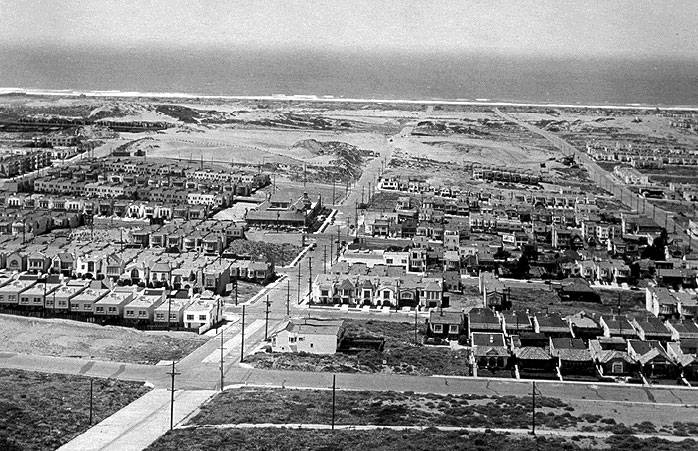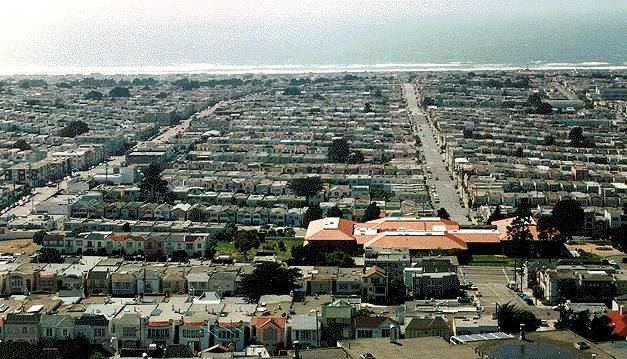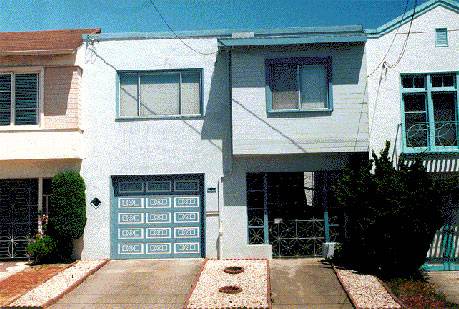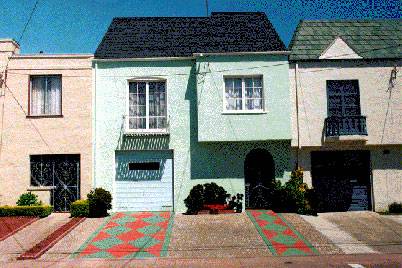Sunset Houses: Difference between revisions
(changed sequence and added category) |
(added caption to photo per Lorri Ungaretti's suggestions) |
||
| Line 1: | Line 1: | ||
[[Image:Sunset dunes 1947.jpg]] | [[Image:Sunset dunes 1947.jpg]] | ||
'''Sunset houses start to fill dunes in | '''Sunset houses start to fill dunes in 1936. The large building in the center of the photo is the old Infant Shelter, later the Conservatory of Music, and now a French school at 19th and Ortega.''' | ||
''Photo: Greg Gaar Collection, San Francisco, CA'' | ''Photo: Greg Gaar Collection, San Francisco, CA'' | ||
[[Image:sunset$sunset-homes.jpg]] | [[Image:sunset$sunset-homes.jpg]] | ||
'''A more recent photo showing the development of the Sunset.''' | |||
''Photo: Chris Carlsson'' | ''Photo: Chris Carlsson'' | ||
Revision as of 17:41, 18 December 2008
Sunset houses start to fill dunes in 1936. The large building in the center of the photo is the old Infant Shelter, later the Conservatory of Music, and now a French school at 19th and Ortega.
Photo: Greg Gaar Collection, San Francisco, CA
A more recent photo showing the development of the Sunset.
Photo: Chris Carlsson
The sand dunes that covered the Sunset District were finally covered over during the post-WWII construction boom. The mass produced homes and their cement front yards have since become the object of considerable derision among residents of the older parts of San Francisco, but remain a relative bargain for working and middle-class individual housing. On the infrequent clear days, when the fog lifts, a spectacular view of the Pacific Ocean is one of the secret benefits of living in the Sunset.
Photos: Chris Carlsson




